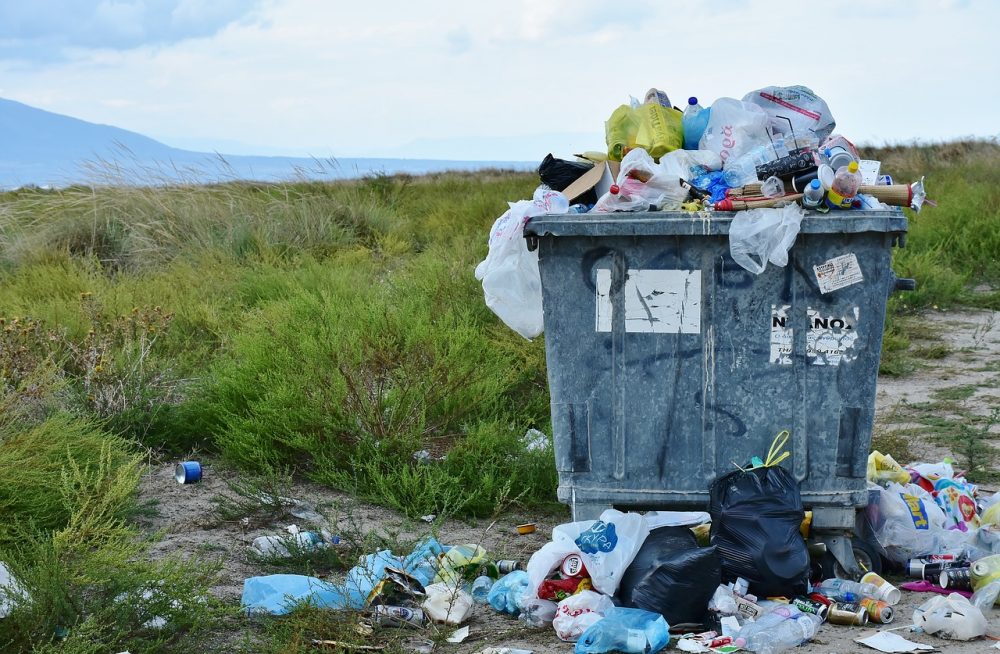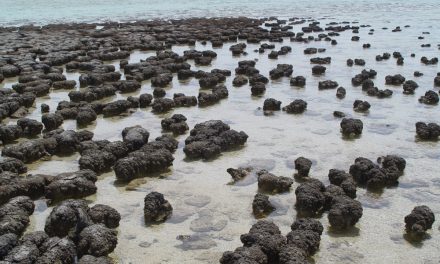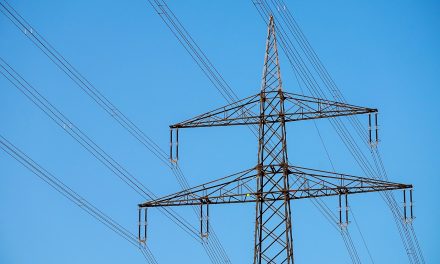The Economist lauded Australia in a recent report as the next Golden State whose resource boom and sound economic management will ensure its prosperity for a considerable period of time. When I last returned to Singapore, I was asked a question by a university professor who had supervised me and whom I have maintained contact with over the years. He asked in what ways was Australia better than Singapore as he was skeptical about the choice of people migrating from Singapore to Australia. Indeed, there are many Asians who were attracted to Australia but eventually returned to their home countries after failing to obtain good employment in Australia.
I feel that Australia and Singapore both have positive and negative points, with regards to settling down. However, I have not seriously thought about how Australia measures up in various areas relative to other countries. Whenever Singapore scores highly in some global rankings, these news will always be prominently reported by the Singapore’s media. I hardly come across reporting of Australia’s ranking here so I thought it may be worthwhile to do some online research in this area.
I have compiled five tables below, showing various indicators (economic, social, political, etc), the assessing body, the year of assessment, Australia’s rank/score and the top-ranking country. I came from Singapore and naturally have an interest in knowing how Singapore fares relative to other nations so I have also included Singapore’s rankings for the various measures. I have provided hyperlinks and references so you can click them to find the rank and score for any country. Australia’s rank and score for the previous assessment year is also provided, for comparison against the current assessment. The legend at the end of this post displays the ranking organizations and their abbreviations.
So what do I learn from these statistics? Australia performs pretty well, especially relative to other OECD countries. However, for most measures, it is not among the cream of the crop in the top elite group of countries. This sentiment of “falling short” or “not excellent enough” was expressed by the Economist in the same report: “Some Australians talk big but actually think small……All these (plans) are under way, but few are surging ahead. Though the country’s best-known building is an opera house, for example, the arts have yet to receive as much official patronage as they deserve…..Australia’s universities, like its wine, are decent and dependable, but seldom excellent.”
It is interesting to note that the northern European countries (Sweden, Norway, Finland, Denmark, Iceland, Netherlands, Ireland) and alpine countries (Switzerland, Canada, Australia, New Zealand) feature prominently in many indicators. They are all temperate countries with beautiful landscapes and most are sparsely populated. I do not know if the climate contributes to their high rankings. The notable exceptions to this “rule” are Singapore, Hong Kong and Qatar, all characterized by being small, fast-pace, competitive, highly-adaptive, resilient and with uncomfortable temperatures.
Australia performs extremely well for the Human Development Index HDI (ranked second), Education Index 2007 (1st), World Giving Index (1st), Legatum Prosperity Index (4th), Quality of Life Index 2005 (6th) and Democracy Index (6th).
I am very surprised that Singapore was ranked 52nd for the Education Index in 2007 and 92th in 2006. This is somewhat strange as some inconspicuous countries such as Barbados (16th), Kazakhstan (23rd) and Guyana (39th) were ranked much ahead of Singapore. I can accept the possibility that the older Singaporeans may have received less education due to Singapore achieving its prosperity within 1-2 generations. However, its extremely low ranking still runs against my ingrained knowledge of the importance that Singapore attaches to education. For instance, the National University of Singapore was ranked 34th, higher than the University of Melbourne (ranked 36th), the top ranking Australian university in the 2010 Times Higher Education World University Rankings. Singapore students also excelled in the 2009 Programme for International Student Assessment (PISA), having achieved second in Mathematics, fourth in Science and fifth in Reading. This anomaly makes me skeptical of the underlying methodology and criteria used. As the Education Index forms part of the HDI in 2007, this inevitably leads me to question the reliability of the HDI.
Australians are people of great generosity, as seen by its number one place in the World Giving Index. In contrast, Singapore ranks towards the bottom at 91th place, despite several high-profile televised charities fundraising events each year. It is notable that Singapore fares poorly for the Democracy and Press Freedom Index, presumably because the ruling politicians have deemed the western models of democracy to be unsuitable for Singapore.
In a recent interview with the Age, James Packer said that Australia is targeting the wrong segment of the tourist market, that is, the faraway European and American backpackers on a shoestring budget. Australia should rather be aiming for the affluent, rising, high-spending and geographically-closer middle-class Asian market. According to the latest World Economic Forum figures, Australia’s global ranking in travel and tourism competitiveness has dived from 4th place in 2008 to 13th place in 2011 while Singapore has moved up from 16th place to 10th over the same period. Singapore is on target to reach $S30 billion ($A22.75 billion) revenue and 17 million visitors by 2015. Australia apparently has fallen behind its competitors in what it is able to offer to tourists in terms of attractions, infrastructure and services.
Australia’s rankings also appear to have slipped for most other indicators (red for decline, blue for gain in ranking). This resonates with the advice of caution against complacency given in another recent Economist report: “this era of prosperity and self-confidence should be a good time for Australians to take stock and confront any problems. On the face of it, their troubles are few: in 20 years of radical change all the obvious economic issues have been dealt with. Things are good, and the beach beckons. Certainly, the politicians seem unworried. Though they talk of reform, they spend most of their time scrapping about issues like climate change. A slight whiff of complacency pervades the groves of the capital, Canberra. That in itself should be a warning. ”
Table 1: GDP (Gross Domestic Product) and GDP per capita
| Measures | Pub | Publisher | Year | Rank (Score) | No. 1 Country (Score) | Singapore’s Rank (Score) |
| GDP (Nominal) per capita |
Ref | IMF | 2010 | 7 (US$55,590) |
Luxembourg (US$108,832) |
15 (US$43,117) |
| GDP (Nominal) per capita | Ref | World Bank | 2009 | 16 (US$42,279) |
Monaco (US$186,175) |
22 (US$36,537) |
| GDP (Nominal) per capita | Ref | CIA | 2000-2010 | 6 (US$56,700) |
Qatar (US$150,400) |
8 (US$49,800) |
| GDP (PPP) per capita |
Ref | IMF | 2010 | 10 ($39,699) |
Qatar ($88,559) |
3 ($52,839) |
| GDP (PPP) per capita | Ref | World Bank | 2009 | 12 ($39,539) |
Qatar ($91,379) |
6 ($50,633) |
| GDP (PPP) per capita | Ref | CIA | 2010 | 11 ($41,300) |
Qatar ($145,300) |
5 ($57,200) |
| GDP (Nominal) | Ref | IMF | 2010 | 13 (US$1,235,539m) |
US (US$14,657,800m) |
39 (US$222,699m) |
| GDP (Nominal) | Ref | World Bank | 2009 | 13 (US$924,843m) |
US (US$14,119,000m) |
42 (US$182,232m) |
| GDP (Nominal) | Ref | CIA | 2010 | 13 (US$1,236,000m) |
US (US$14,660,000m) |
39 (US$222,700m) |
| GDP (PPP) | Ref | IMF | 2010 | 17 ($882,362m) |
US ($14,657,800m) |
39 ($291,712m) |
| GDP (PPP) | Ref | World Bank | 2009 | 17 ($858,168m) |
US ($14,119,000m) |
46 ($252,898m) |
| GDP (PPP) | Ref | CIA | 2010 | 17 ($882,400m) |
US ($14,660,000m) |
39 ($291,900m) |
Table 2: Economic Indicators
| Measures | Pub | Publisher | Year | Rank (Score) | Previous Assessment Year Rank | No. 1 Country (Score) | Singapore’s Rank (Score) |
| Global Competitiveness Index | Ref | WEF | 2010-2011 | 16 (5.11) |
15 (5.15) |
Switzerland (5.63) |
3 (5.48) |
| Ease of Doing Business Index | Ref | World Bank | 2011 | 10 | 9 | Singapore | 1 |
| Index of Economic Freedom | Ref | Heritage Foundation&WSJ | 2011 | 3 (82.5) |
3 (82.6) |
Hong Kong (89.7) |
2 (87.2) |
| Economic Freedom of the World | Ref | Fraser Instittute | 2008 | 8 (7.9) |
9 (7.89) |
Hong Kong (9.05) |
2 (8.7) |
| Globalization Index | Ref | KOF | 2011 | 22 (81.41) |
19 (83.82) |
Belgium (92.60) |
18 (84.39) |
| Globalization Index | Ref | A.T.Kearney | 2007 | 13 | 8 | Singapore |
1 |
| Economic Globalization | Ref | KOF | 2011 | 45 (73) |
Singapore (96.8) |
1 (96.8) |
|
| Global Enabling Trade Index | Ref | WEF | 2010 | 15 (5.13) |
14 | Singapore (6.06) |
1 (6.06) |
| Travel &Tourism Competitiveness Index | Ref | WEF | 2011 | 13 (5.15) |
Switzerland (5.68) |
10 (5.23) |
|
| International Tourists Arrivals | Ref | UNWTO | 2009 | 40 (5.6m) |
(5.6m) | France (74.2m) |
30 (7.5m) |
| International Tourism Receipts | Ref | UNWTO | 2009 | 8 (US$25.6b) |
(US$24.8b) | US (US$93.9b) |
28 (US$9.2b) |
Table 3: Education, Technology and Innovation Indicators
| Measures | Pub | Publisher | Year | Rank (Score) | Previous Assessment Year Rank | No. 1 Country (Score) | Singapore’s Rank (Score) |
| e-readiness | Ref | EIU | 2010 | 9 (8.21) |
6 (8.45) |
Sweden (8.49) |
8 (8.22) |
| Global Innovation Index | Ref | BCG, NAM & MI | 2008 | 22 (1.02) |
Singapore (2.45) |
1 (2.45) |
|
| Global Innovation Index | Ref | INSEAD | 2009-2010 | 18 (4.28) |
Iceland (4.86) |
7 (4.65) |
|
| Patents in force | Ref | WIPO | 2008 | 13 (107,699) |
US (1,872,872) |
– | |
| Patents granted | Ref | WIPO | 2008 | 15 (4,386) |
Japan (239,338) |
(1,369) | |
| Patents applied | Ref | WIPO | 2008 | 14 (11,230) |
Japan (502,054) |
(3,635) | |
| Education Index | Ref | UNDP | 2007 | 1 (0.993) |
1 (0.993) |
5 countries (0.993) |
52 (0.913) |
| Student Assessment (Maths) | Ref | PISA | 2009 | 15 (514) |
Shanghai, China (600) |
2 (562) |
|
| Student Assessment (Science) | Ref | PISA | 2009 | 10 (527) |
8 (527) |
Shanghai, China (575) |
4 (5.42) |
| Student Assessment (Reading) | Ref | PISA | 2009 | 9 (515) |
7 (513) |
Shanghai, China (556) |
5 (526) |
Table 4: Social, Development, Liveability and Environment Indicators
| Measures | Pub | Publisher | Year | Rank (Score) | Previous Assessment Year Rank | No. 1 Country (Score) | Singapore’s Rank (Score) |
| Human Development Index | Ref | UNDP | 2010 | 2 (0.937) |
2 (0.935) |
Norway (0.938) |
27 (0.846) |
| Global Gender Gap Index | Ref | WEF | 2010 | 23 (0.7271) |
20 (0.7282) |
Iceland (0.8496) |
56 (0.6914) |
| Social Globalization | Ref | KOF | 2011 | 16 (82.48) |
Switzerland (92.36) |
22 (78.81) |
|
| Legatum Prosperity Index | Ref | Legatum | 2010 | 4 (3.059) |
6 | Norway (3.375) |
17 (2.040) |
| Quality-of-life index | Ref | EIU | 2005 | 6 (7.925) |
Ireland (8.333) |
11 (7.719) |
|
| Satisfaction with Life Index | Ref | Adrian White | 2006 | 26 (243.33) |
Denmark (273.5) |
53 (230) |
|
| World Giving Index | Ref | Charities Aid Foundation | 2010 | 1 (57%) |
Australia (57%) |
91 (27%) |
|
| Environmental Performance Index | Ref | Yale & Columbia University | 2010 | 51 (65.7) |
46 (79.8) |
Iceland (93.5) |
28 (69.6) |
| CO2 emission | Ref | CDIAC | 2007 | 15 (1.35%) |
China (22.3%) |
56 (0.18%) |
Table 5: Political and Governance Indicators
| Measures | Pub | Publisher | Year | Rank (Score) | Previous Assessment Year Rank | No. 1 Country (Score) | Singapore’s Rank (Score) |
| Composite Index of National Capability | Ref | J. David Singer | 2007 | 28 (0.007113) |
China (0.198578) |
48 (0.003226) |
|
| Corruption Perceptions Index | Ref | TI | 2010 | 8 (8.7) |
8 (8.7) |
Denmark, NZ, Sin (9.3) |
1 (9.3) |
| Democracy Index | Ref | EIU | 2010 | 6 (9.22) |
Norway (9.80) |
82 (5.89) |
|
| Press Freedom Index | Ref | Reporters without Borders | 2010 | 18 (5.38) |
16 (3.13) |
6 countries (0.00) |
136 (47.50) |
| Political Globalization | Ref | KOF | 2011 | 24 (91.71) |
France (98.43) |
77 (75.05) |
|
| Global Peace Index | Ref | IEP | 2011 | 18 (1.455) |
19 (1.467) |
Iceland (1.148) |
24 (1.585) |
Legend:
- BCG = Boston Consulting Group
- CDIAC = Carbon Dioxide Information Analysis Center
- CIA = Central Intelligence Agency World Factbook
- IEP = Institute for Economics and Peace
- EIU = Economist Intelligence Unit
- MI = The Manufacturing Institute
- NAM = National Association of Manufacturers
- PISA = Programme for International Student Assessment
- PPP =Purchasing Power Parity
- T1 = Transparency International
- UNDP = United Nations Development Programme
- UNWTO = United Nations World Tourism Organization
- WEF = World Economic Forum
- WIPO = World Intellectual Property Organization
- WSJ = The Wall Street Journal




